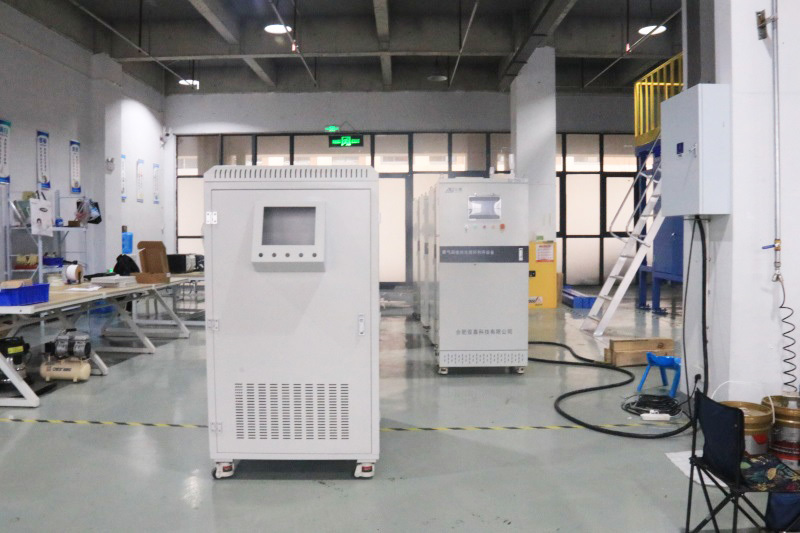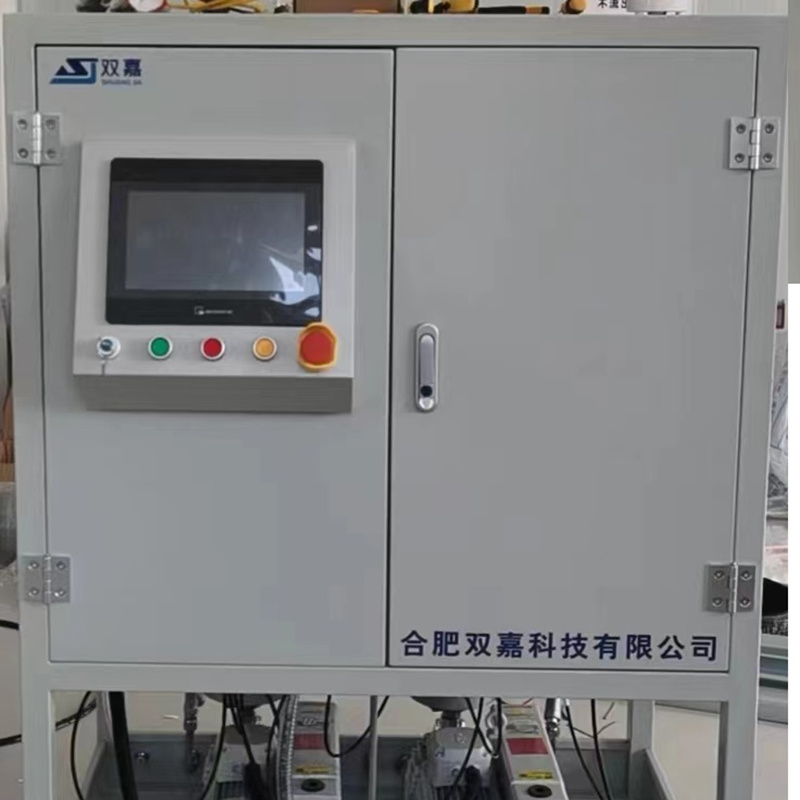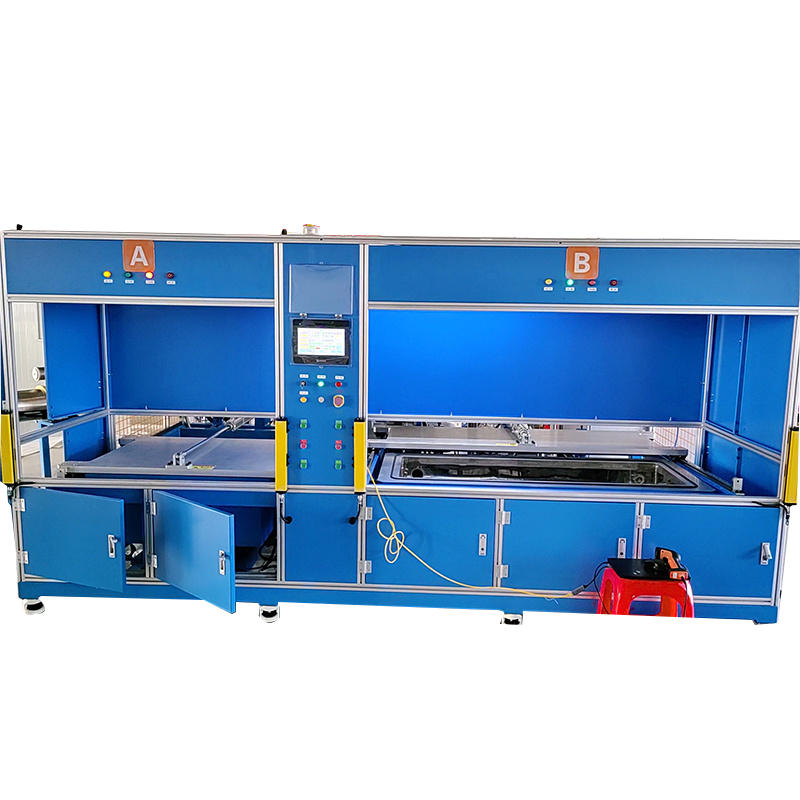Information Details
How Helium Leak Detection Techniques Revolutionize EV Battery Quality Control
Introduction to Helium Leak Detection in EV Battery Quality Control As the electric vehicle (EV) industry accelerates towards a more sustainable future, ensuring the quality and safety of EV batteries has become a paramount concern. Among the various testing methodologies available, **helium leak detection techniques** have emerged as a critical tool in revolutionizing quality control processes. T
Release time:
2025-04-23
Introduction to Helium Leak Detection in EV Battery Quality Control
As the electric vehicle (EV) industry accelerates towards a more sustainable future, ensuring the quality and safety of EV batteries has become a paramount concern. Among the various testing methodologies available, **helium leak detection techniques** have emerged as a critical tool in revolutionizing quality control processes. This article delves deep into how these sophisticated techniques not only enhance the reliability of EV batteries but also contribute to the overall safety and efficiency of electric vehicles.
Understanding the Significance of EV Battery Quality Control
Quality control in the manufacturing of EV batteries is essential for several reasons:
1. Safety Concerns
EV batteries contain high-energy materials that can pose safety risks if not properly managed. Any leaks or defects can lead to catastrophic failures, including fires or explosions.
2. Performance Optimization
Ensuring that batteries function at their optimal capacity is crucial for maximizing the range and efficiency of electric vehicles. Quality control helps in identifying issues that can affect performance.
3. Longevity and Reliability
Batteries that have undergone rigorous quality control measures tend to last longer and perform reliably over their lifespan, thereby increasing consumer confidence in electric vehicles.
The Role of Helium in Leak Detection
Helium leak detection has gained prominence in various industries due to its unique properties. Understanding its significance in the context of EV battery quality control requires a closer look at how helium functions as a tracer gas.
1. Unique Properties of Helium
Helium is an inert gas, meaning it does not react with other materials, making it ideal for testing purposes. Its small atomic size allows it to seep through tiny leaks that other gases might not penetrate, ensuring a more thorough inspection process.
2. The Helium Leak Detection Process
The process generally involves the following steps:
- **Preparation**: The battery unit is sealed in a chamber.
- **Helium Injection**: Helium gas is introduced into the chamber.
- **Detection**: Specialized sensors detect any helium that escapes from leaks, indicating areas of concern.
This meticulous process provides a clear insight into the integrity of battery enclosures, ensuring that manufacturers can address potential issues before they reach consumers.
Benefits of Helium Leak Detection Techniques in EV Battery Manufacturing
The adoption of helium leak detection techniques in EV battery manufacturing offers a plethora of benefits:
1. Enhanced Leak Detection Sensitivity
Helium leak detectors are capable of identifying leaks as small as one part per billion (ppb). Such sensitivity is crucial for modern battery designs, which require increasingly stringent quality standards.
2. Increased Production Efficiency
By integrating helium leak detection into the manufacturing process, companies can swiftly identify and rectify leaks, reducing downtime and minimizing waste. This leads to more efficient production cycles and cost savings.
3. Compliance with Industry Standards
As regulations surrounding EVs become increasingly stringent, manufacturers must ensure compliance with safety and quality standards. Helium leak detection not only helps in meeting these standards but also enhances the brand's reputation.
4. Comprehensive Quality Assurance
Helium leak detection provides a non-destructive testing method, allowing manufacturers to conduct thorough inspections without damaging the batteries. This comprehensive quality assurance ensures that only the best products reach the market.
Applications of Helium Leak Detection in EV Battery Production
The applications of helium leak detection techniques are varied and critical in the realm of EV battery production.
1. Testing Battery Cells
Before being assembled into packs, individual battery cells undergo helium leak testing to ensure they are free of defects. This early-stage testing is vital for preventing larger issues later in the production chain.
2. Pack Assembly Verification
Once battery cells are assembled into packs, further testing is conducted to ensure that the entire pack is sealed and free from leaks. This step is crucial for maintaining battery performance and safety.
3. Post-Manufacturing Inspections
Even after production, batteries may be subjected to helium leak testing as part of routine quality assurance. This ongoing vigilance helps to maintain product integrity throughout the battery's lifetime.
Challenges and Solutions in Implementing Helium Leak Detection
While the benefits of helium leak detection techniques are clear, manufacturers may face challenges in their implementation.
1. Cost Implications
Investing in helium leak detection technology can be expensive. However, the long-term savings associated with improved quality and reduced warranty claims can offset these costs.
2. Training Requirements
Personnel must be trained to operate helium leak detection equipment effectively. Investing in proper training programs is essential for maximizing the benefits of this technology.
3. Equipment Maintenance
Regular maintenance of detection equipment is critical to ensure accurate results. Establishing a maintenance schedule can help mitigate this challenge.
The Future of Helium Leak Detection in EV Battery Quality Control
As technology advances, the future of helium leak detection in the EV battery sector looks promising.
1. Integration with Automation and AI
The integration of automated systems and artificial intelligence can enhance the helium leak detection process, allowing for faster and more accurate inspections.
2. Expanded Application in Other Industries
The successful application of helium leak detection in EV battery production may pave the way for its adoption in other sectors, including aerospace, pharmaceuticals, and more.
FAQs About Helium Leak Detection Techniques
1. What is helium leak detection?
Helium leak detection is a method that uses helium gas to identify leaks in sealed systems, particularly effective in applications requiring high sensitivity.
2. Why is helium preferred for leak detection?
Helium is inert and has a small atomic size, making it capable of detecting minute leaks that other gases may not.
3. How does helium leak testing benefit EV batteries?
It ensures the integrity and safety of batteries, enhances performance, and adheres to industry standards.
4. Are there any downsides to using helium leak detection?
While there are costs associated with equipment and training, the benefits often outweigh the initial investment.
5. Can helium leak detection be used for other applications?
Yes, it is widely used in various industries, including aerospace and pharmaceuticals, for testing seal integrity.
Conclusion
In conclusion, helium leak detection techniques stand at the forefront of ensuring quality control in EV battery manufacturing. By enhancing safety, performance, and compliance with stringent industry standards, these methods play a crucial role in the sustainable growth of the electric vehicle sector. As technology continues to evolve, the integration of helium leak detection into manufacturing processes will likely become more sophisticated, paving the way for a safer and more efficient future in electric mobility. With its unmatched sensitivity and non-destructive testing capabilities, helium leak detection is set to revolutionize not just battery quality control, but also the broader landscape of manufacturing across multiple industries.
Helium vacuum leak detection for EV batteries
Latest Blog








